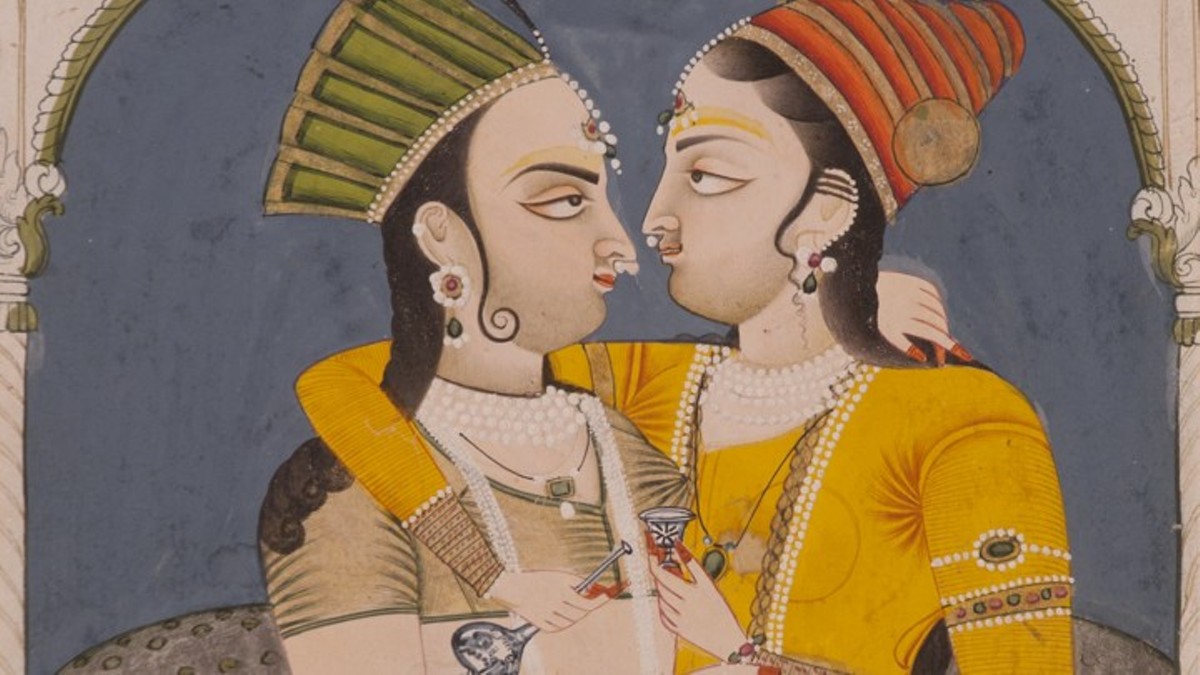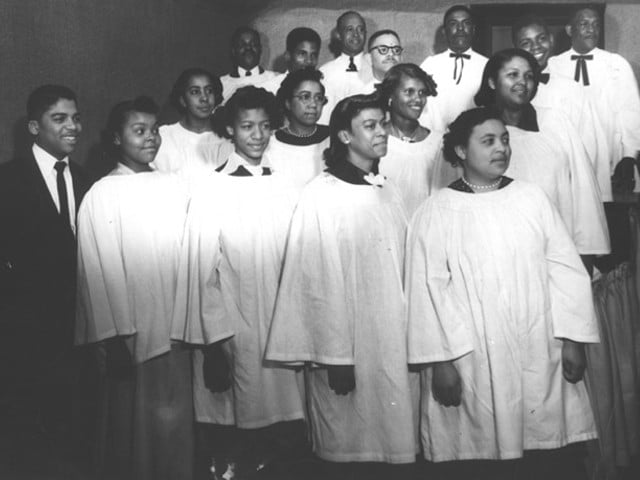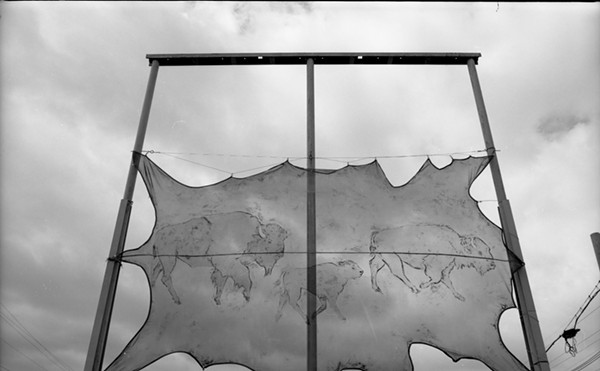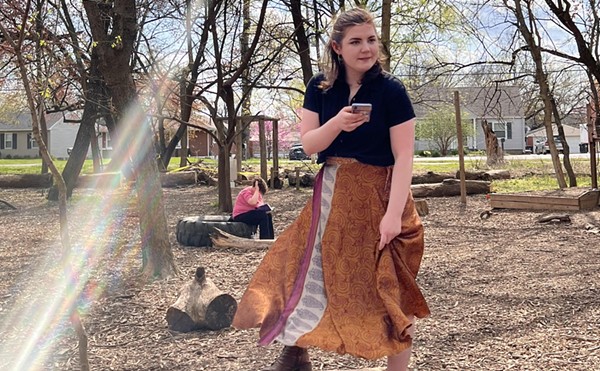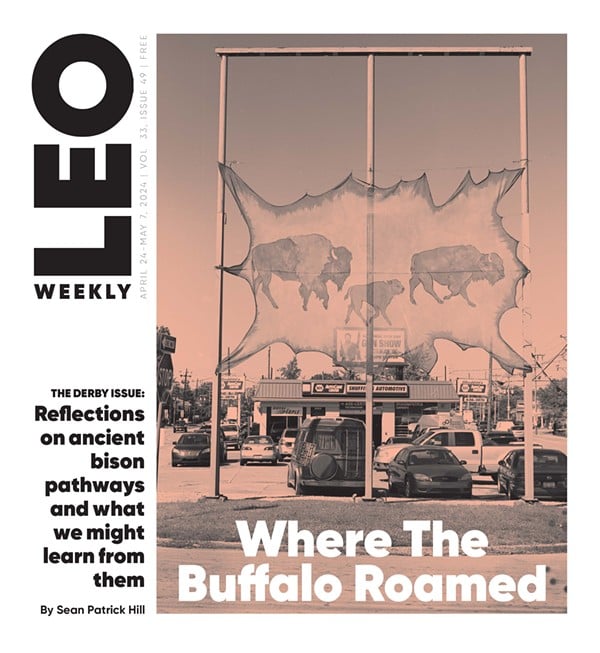Curated as a pair of thematic exhibitions, it represents one of the most extensive collections of South Asian paintings in the world outside of present-day Pakistan and India. It also represents the first exhibition of South Asian art in the 97-year history of the Speed Art Museum.
Marigold fibers hang from the entryways to the special exhibition galleries on the third floor of the north building, welcoming viewers into galleries decorated in colors and visual motifs insured by the art itself. Maps are provided as a way to establish context, not only for the historical times, but also for the geographic locations in which these works were created. It is an intricately plotted and vibrant journey.
Exquisitely detailed portraits and manuscript illuminations offer a dynamic overview of South Asia across four centuries. Many of the works are small in scale yet their hues are so saturated, it is a challenge not to become mesmerized.
Some of the works were created with techniques as subtle and complex as nim-qalam (half pen), in which monochromatic tones are highlighted in gold, while others were created using the tracing method called pouncing, in which artists poked holes into one image and created another image by sprinkling charcoal over the holes in the original.
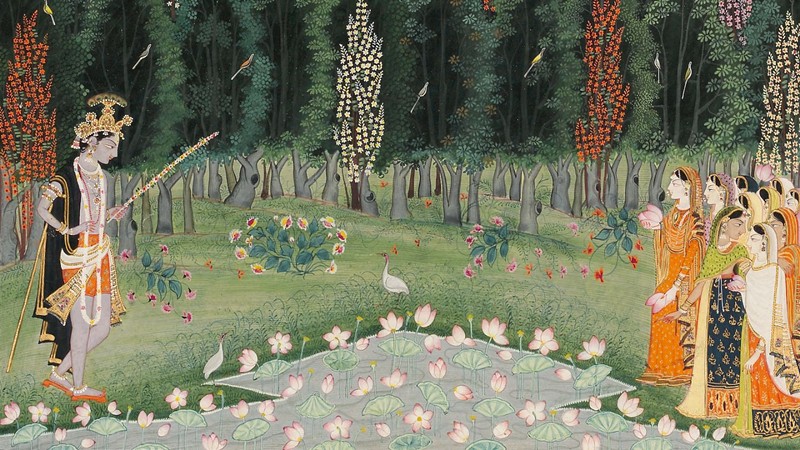
Courtesy of Speed Art Museum
Detail of “Purkhu, To Catch a glimpse of him, even from a distance.” Himachal Pradesh, Kangra, ca. 1790. Ink, opaque watercolor, and gold on paper; 11 5/32 x 13 3/8 in. (28.3 x 34 cm).
Exploring Courtly Life And The Role Of The Elephant
Curated by Dr. Ladan Akbarnia from the San Diego Museum of Art (SDMA) in partnership with venue curators Kim Spence and Erika Holmquist-Wall from the Speed Art Museum, the exhibit is presented in two parts.The first part is “The Throne, The Chase, and The Heart,” introducing viewers to Indian rulers and courtiers by way of 50 intricate portraits of courtly life. Many of these works were originally created for albums intended for close viewing, while others were created on a larger scale.
This part of the exhibit presents the culture of Islamic and other courts in India between the 16th and the 19th centuries with representations of Hindu, Persian, and Islamic artistic traditions. It is divided into three sections: “The Throne,” which explores images of power and authority, “The Chase” which illustrates royal hunts, and “The Heart,” which recounts the experience of courtly love.
The second of the exhibit is “Elephant in the Room,” using an English-language idiom as shorthand for its survey of the venerated role of the elephant in South Asian folklore and literary traditions. It presents its subject in four sections: the highly narrative “Elephants in Indian Literature,” the startlingly visceral “Elephants in Action,” the stately “Powerful Processions,” and the tender “Portraits and Preservation.”
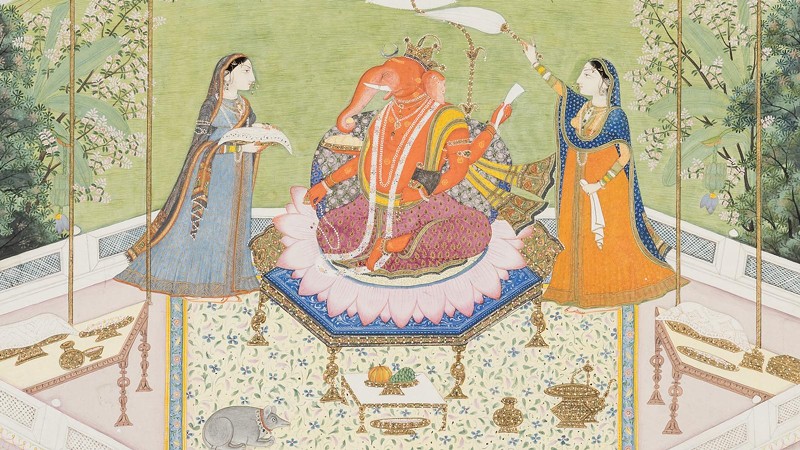
Courtesy of Speed Art Museum
Detail of “Ganesh Puja.” Himachal Pradesh, Mandi, ca. 1835. Ink, opaque watercolor, and gold on paper; 8 29/32 x 11 11/16 in. (22.6 x 29.7 cm).
A Rare Opportunity to Experience The Binney Collection
This exhibit was curated from a selection of between 1400 and 1500 works bequeathed to the SDMA in 1989 by an American collector named Edwin Binney III (1925–1986). An heir to the Crayola fortune, and a scholar who taught French at Harvard University for six years, Binney had a particular passion for Indian and South Asian painting.A resident of San Diego and a trustee of the SDMA, Binney even had his own office in the basement of the museum’s library. He brought together his academic background with his love of collecting by cultivating an encyclopedic collection that included all the major schools of Indian painting. After his passing, his estate left a sizable portion of his collection to the museum.
Akbarnia says that since the museum acquired these pieces in 1990, they have had “this treasure trove, a really large and impressive selection of Indian painting and South Asian painting.”
“But not everybody gets to see them. And why is that? They’re light sensitive. They can’t all be shown. They can't be shown long-term.” Every six months, the SDMA rotates a selection of 15–20 paintings from their permanent collection. “So there’s a space there for the mini collection to always be seen. But they have to be different paintings. And then there’s all these other paintings that still go unseen.”
“Treasure trove” is an accurate way to describe not only this exhibit, but also, the rarity of the opportunity to view this work in person.
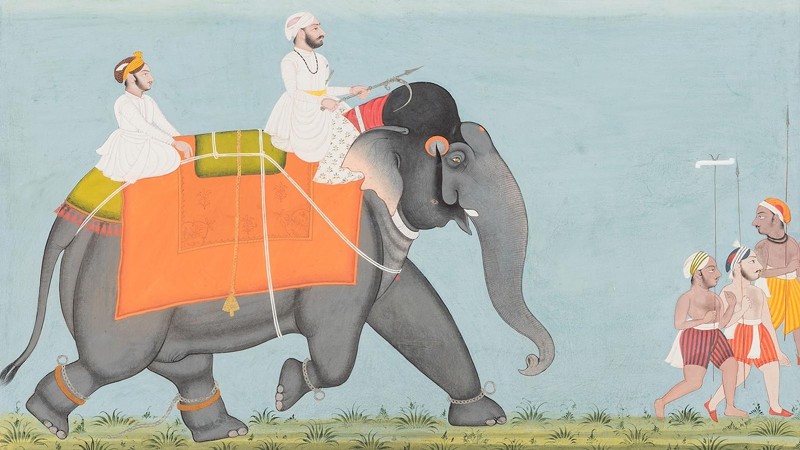
Courtesy of Speed Art Museum
Detail of “Madan Murat, the elephant of Sagram Singh II.” Rajasthan, Udaipur, Mewar, 1725. Ink, opaque watercolor, and gold on paper; 11 7/8 x 18 15/16 in. (30.2 x 48.1 cm).
Mitigating Risk of Losing South Asian Art Collection
Roxana Velásquez, Executive Director of the SDMA “advocated for its touring to places so that other people who weren’t in San Diego could also enjoy them.” Touring pieces from this collection provides the unequivocal benefit of scholars being able to examine these works, and museum-goers being able to appreciate them in person.“But,” Akbarnia says, “the downside of it is that every time you expose a light sensitive work on paper, you have to let it rest for several years so that you can prevent its being faded into oblivion.”
Light can cause irreversible damage to works of art on paper as well as to textiles. The relatively low light in the galleries at the Speed Art Museum is highly intentional: it will protect these works—which range in age from at least 200 years old to more than 500 years old—from damage like color fading and embrittlement.
“I feel that my job as a curator is to try to ensure that this lasts as long as possible so that more generations can see it beyond ours.”
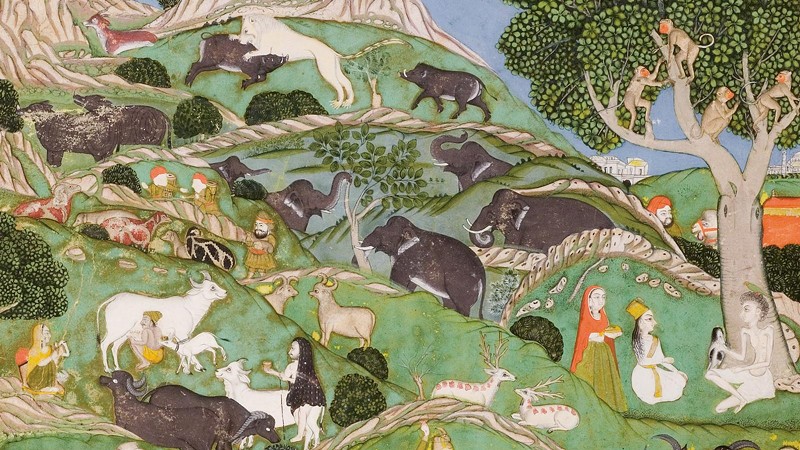
Courtesy of Speed Art Museum
Detail of “Scenes from the courtly hunt (Layli visits Majnun in the wilderness).” Deccan, Telangana, Hyderabad, ca. 1770. Ink and opaque watercolor on paper; 13 5/8 x 9 1/2 in. (34.6 x 24.1 cm).
Akbarnia’s Curatorial Passion For South Asian Art
In describing the nascence of this exhibition, Akbarnia says the first exhibit was conceived by Dr. Sabiha Al Khemir, an internationally recognized authority on Islamic art, before Akbarnia arrived at the SDMA.The concept was there, but it had not been developed into a fully realized exhibition, much less a touring exhibition. Akbarnia had been working on her own exhibition of works curated from the Binney collection, and the theme was elephants. These curatorial efforts resulted in the pair of exhibitions opening today.
“There’s so many elephants in Indian painting, which tells us something also about their value in Indian oral traditions and culture. So bringing these together to travel—first to Madrid and now to Louisville—was an effort to show the collection.”
Akbarnia began her role as Curator of South Asian and Islamic Art at the SDMA in 2019. She had previously been the Curator and Assistant Keeper of Islamic Collections at the British Museum, and before that, Hagop Kevorkian Associate Curator of Islamic Art at the Brooklyn Museum.
Her knowledge of the Binney collection is as ornately detailed as the pieces themselves. The sublimity of these works is evident in the her passion for the art, as well as in the Speed Art Museum’s presentation of this luminous exhibition.
“India: South Asian Painting from the San Diego Museum of Art”
Feb. 16–May 12
Wednesday–Saturday: 10 a.m.–5 p.m.
Sunday: 12 p.m.–5 p.m
Tickets can be purchased online or in-person

